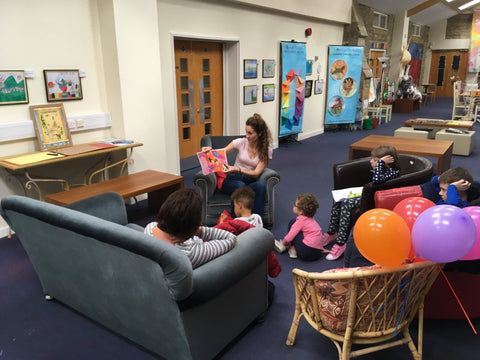









28 August 2018 by Lorna Snowflake

When educators seek to teach children about the traditions and cultural practices of other countries, we start with festivals. We show them pictures of other children, usually smiling and excited to celebrate with family and friends. They learn about the bright lights of Divali, the feasting of Eid and the Dragon Dances of East Asian New Year.
From my own experience at school and now as a parent, it is clear that what children love about this is others having a good time. “It’s a lot like Christmas, really” we tell them. In early years settings, teachers are usually keen to foster empathy and connection with a shared humanity. What better way to connect with others around the world than with love, celebration and family unity. The world is safe in its similarity.
However, the traditions and stories behind these practices are often more difficult to express in such a straightforward and palatable way. They tell not of love and compassion in its simplest form, but the more complicated world of adult actions and reactions. Easter celebrates the crucifixion and resurrection of Jesus; the traditions of the Chinese Dragon Boat Festival remember the suicide of a celebrated national figure. These were not stories written for little children. And rightly so.
Even as adults, hearing or reading these types of stories from other cultures can be unsettling. They sit outside of the comfortable immersion of our own cultures. It is very easy to believe that these differences are beyond our understanding. We feel alienated. They can be taken as offensive, odd or just plain ridiculous. We have become fixed in our beliefs about the nature of the world. As adults, we easily forget that similar things exist in our own cultural traditions and indeed in our present world.
As a storyteller, I have often met many moments such as these in stories from every country in the world including my own. What is often the accepted truths or ideals from past times or symbols from a wider tradition, come to meet us starkly in our present. We often lack a point of reference.
So, somehow, we need to bridge and transform the gap between the bright similarities shown in the picture books and our adult mistrust of what we perceive to be the differences between cultures. Perhaps, even, between our own past and present. The answer, I believe, is through the guided use of texts, stories, myths and legends in mainstream education far beyond the early years.
As children reach what is often called the ‘second stage’ of childhood at around seven years old, it becomes possible to discuss and explore the complexities and grey areas of a wide variety of world stories. It is the perfect time to introduce the ‘grittier’ topics. Continuing this throughout secondary school in a safe environment would give young people the chance to question, discuss and learn how stories have offered humanity not only insight into itself but also solutions to our shared problems. It is my belief that mutual respect can be born from the knowledge that it is possible to be culturally distinct from one another and yet essentially, and importantly, the same.
⚡️ “Learning through Stories:”https://t.co/fE2vGK8bHl
— Snowflake Books (@snowflakebooks) August 29, 2018